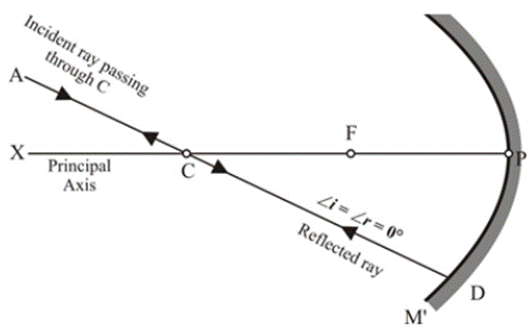- Home/
- CDS & Defence/
- Article
Why a Ray of Light Passing Through the Center of Curvature of Concave Minor Gets Reflected Along the Same Path?
By BYJU'S Exam Prep
Updated on: September 25th, 2023
A ray of light passing through the center of curvature of concave minor gets reflected along the same path as the angle of reflection is equal to the angle of incidence, so the angle of reflection is zero.
Law of Reflection of Light
- Two crucial rules govern the reflected light’s pattern.
- According to the second law, the normal to the surface, the incident ray, and the reflected ray all lie in the same plane.
- According to the first law, the angle of reflection when rays of light are reflected from a flat surface is equal to the incidence angle.
- All reflecting surfaces, including spherical mirrors, are subject to these principles.
Table of content
Explanation
- The angle of reflection is zero because, in accordance with the rule of reflection, it is equal to the angle of incidence. As a result, the incident and reflected ray paths cross and the reflected ray travels through the centre of curvature.
- A light beam’s path coincides with the normal at the incidence point as it travels through the centre of curvature, creating a zero incidence angle.

The curve’s centre (C), the focus (F), and the primary axis (XP) are shown in the diagram.
Summary:-
Why a Ray of Light Passing Through the Center of Curvature of Concave Minor Gets Reflected Along the Same Path?
Since the angle of reflection is equal to the angle of incidence and a light ray travelling through the concave minor’s centre of curvature is reflected along the same path, the angle of reflection is zero.
Related Questions:-
- How Will You Separate a Mixture Containing Kerosene and Petrol the Difference in Their Boiling Points is More Than 25 Degree C
- What Are the Differences Between Aerobic and Anaerobic Respiration Name Some Organisms That Use the Anaerobic Mode of Respiration
- What Are the Limitations of Jj Thomsons Model of the Atom
- What Are the Structure and Function of Alveoli
- What Are Unisexual and Bisexual Flowers Give Two Examples of Each
- What Are Anomers
